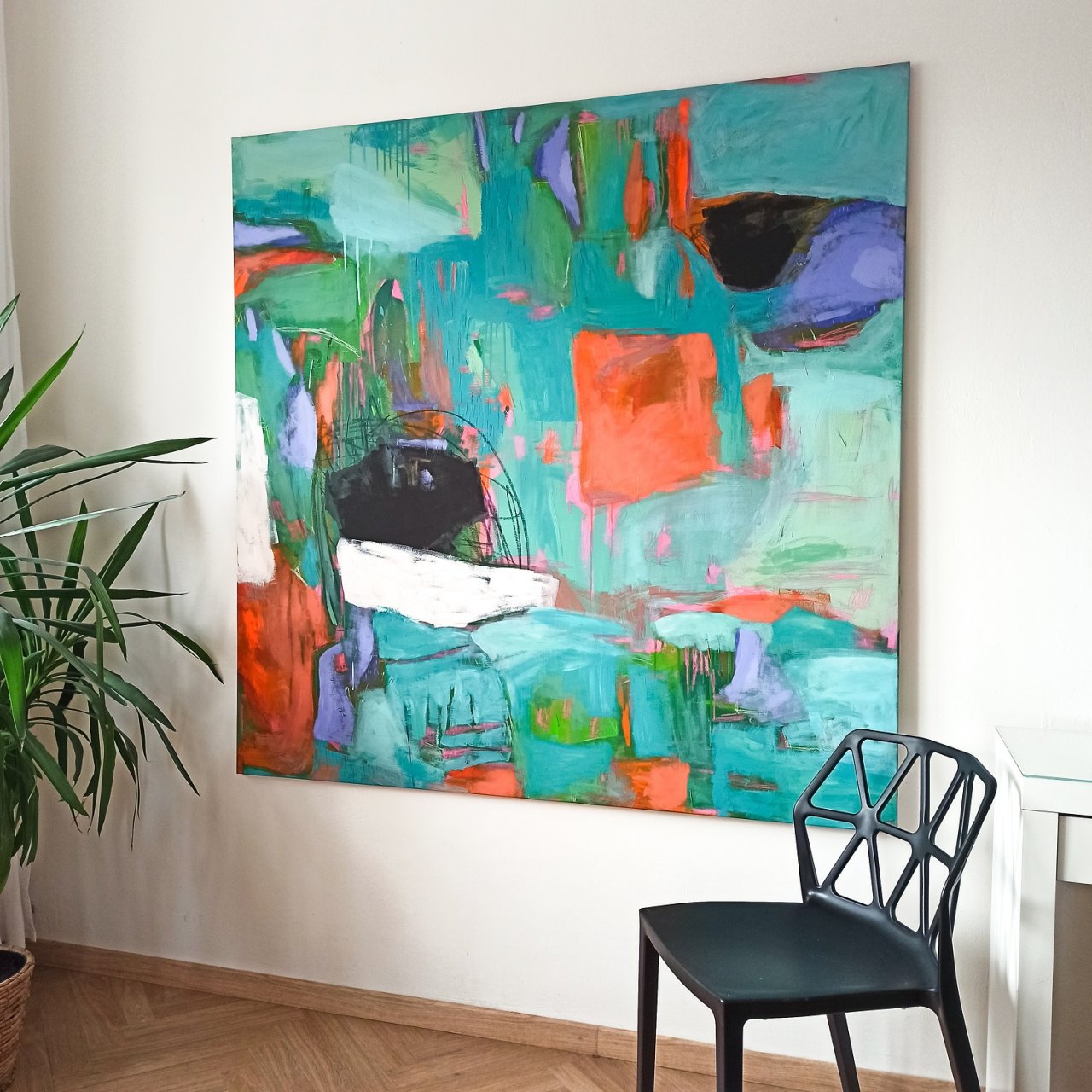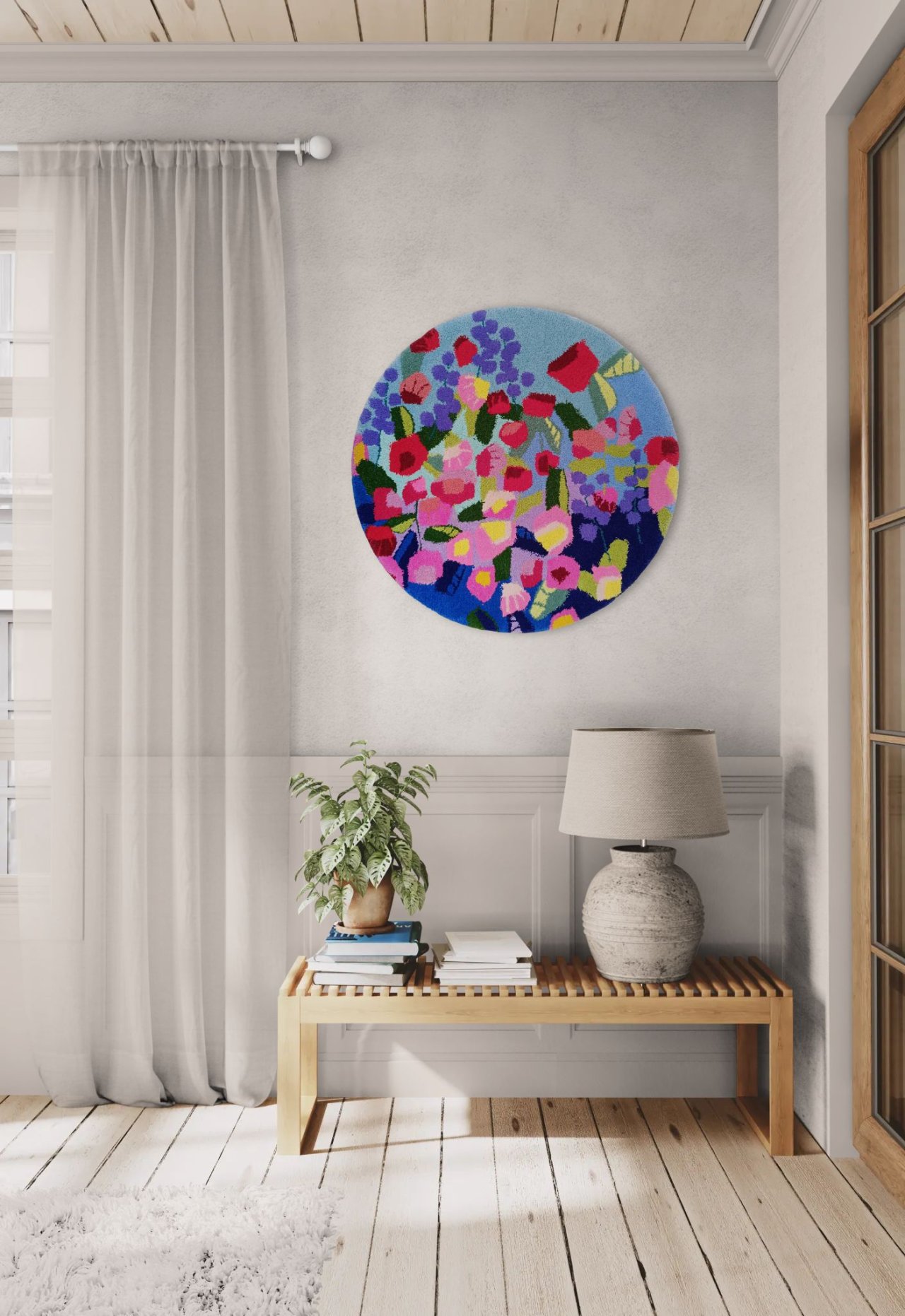Style and color matter – but if the size is wrong, the artwork can lose its impact.
Sometimes people send me a photo of a newly hung painting. The artwork itself looks beautiful – but on the wall, it appears too small. There's too much empty space around it, and instead of anchoring the room, it floats aimlessly. Often, the solution is simple: choose a larger format.
Size truly matters. It determines whether the artwork becomes a focal point – or gets visually lost in the space.

Basic Rule: Proportions to Furniture or Wall
A painting should be approximately ⅔ to ¾ the width of the furniture it's hanging above (such as a sofa, bed, or sideboard). If the artwork hangs on an empty wall, it can take up half or even more of the available width. As a general rule: bigger is better. Pieces always look smaller once they're on the wall than they did in the studio or online.
Examples from Real Interiors
Here are a few common situations I often see – and what artwork sizes I recommend based on them:
Above a sofa measuring 200–220 cm: I recommend a painting that is 140–160 cm wide.
Above a bed that is 180 cm wide: Aim for an artwork that is 120–150 cm wide.
Above a sideboard that is 100 cm wide: A piece around 70–90 cm wide usually works well.
On a large empty wall (250 cm and more): Go for something at least 100 × 100 cm or even larger.
Round Artworks, Tapestries, and Nontraditional Formats
With round paintings or wool tapestries (typically 60–80 cm in diameter), similar size principles apply. Round shapes feel softer and more delicate than square or rectangular pieces, but they still need the right placement and breathing room.

A wool tapestry with an 80 cm diameter can look great when:
- paired with a chest of drawers or low shelf
- placed between windows or in a hallway
- used as a soft visual accent in a bedroom or workspace
- hung alone on a calm, clean wall with minimal visual distractions
Wool has a natural warmth and texture. These pieces don’t shout – they soften, ground, and warm the space in a subtle way.
Prints and Framing – Don’t Forget the Final Size
Prints or posters are a more accessible form of art, but framing can add significantly to the final dimensions.
For example:
An A2 print (42 × 59.4 cm) in a frame with a mat can end up being 50 × 70 cm or larger.
When creating a gallery wall with multiple prints, keep the height or tone consistent – feel free to mix widths or formats.
Larger prints look best in stronger, wider frames – they give the piece the weight it needs visually.
How to Combine Multiple Pieces in One Space
People often hesitate to hang more than one artwork in the same room or on the same wall. But when done right, multiple pieces can create a stronger effect than one large one.
Here’s how to make it work:
Stick to a harmonious color palette – not identical, but don’t let the pieces compete.
Different formats are okay! A large canvas and a small round piece can work well together – just give them room.
Pairs and trios always work – especially if the artworks are mid-size.
Try contrast: a classic stretched canvas with a soft wool tapestry brings texture and balance.
TIP: If you’re unsure about placement, use painter’s tape to map the layout on your wall first. It’ll help you visualize the proportions before you drill.
When to Choose a Tapestry and When a Canvas?
Both canvas paintings and wool tapestries can enhance a space – but they create a different mood and suit different needs.
Wool tapestries:
- feel softer and more tactile
- absorb sound – perfect for bedrooms, hallways or cozy corners
- ideal when you want a calm, relaxed atmosphere
- work beautifully in minimalist, Japandi or nature-inspired interiors
Canvas paintings:
- are bolder and more expressive
- great for living rooms, entryways, dining spaces
- bring strong color, movement, and visual energy
- ideal when you want the artwork to be a statement or a centerpiece
Personal note: Sometimes I recommend a mix – a canvas to lead, and a tapestry to soften and balance it nearby.
In Summary – Size and Context Matter
Choose artwork that fits the space, not just the available wall.
Always test the size visually – painter’s tape works wonders.
Don’t be afraid of larger formats – they usually feel more natural in the room.
Round and textile pieces need breathing space to shine.
Multiple pieces? Absolutely – as long as there’s a sense of unity.
Simona
